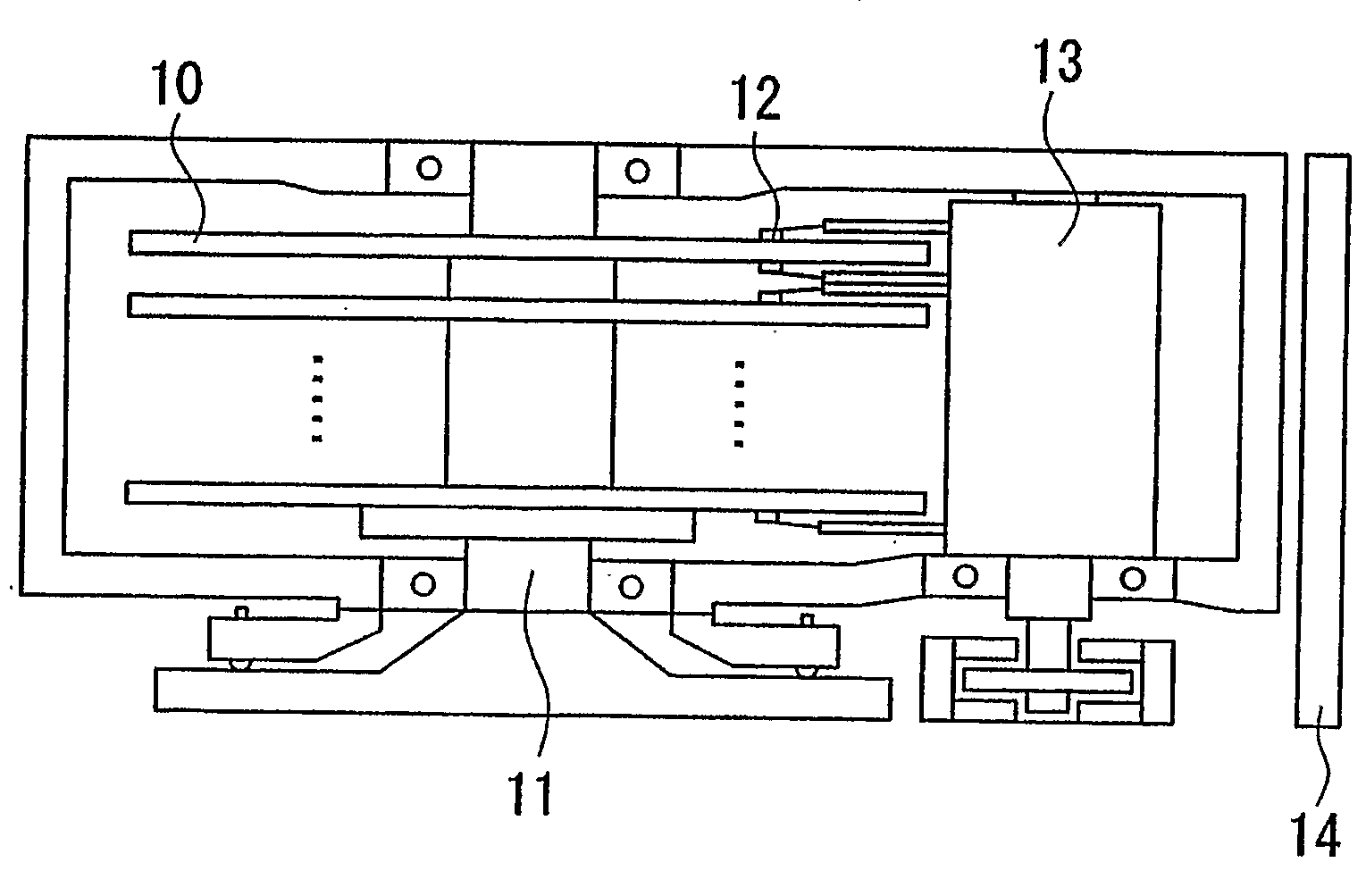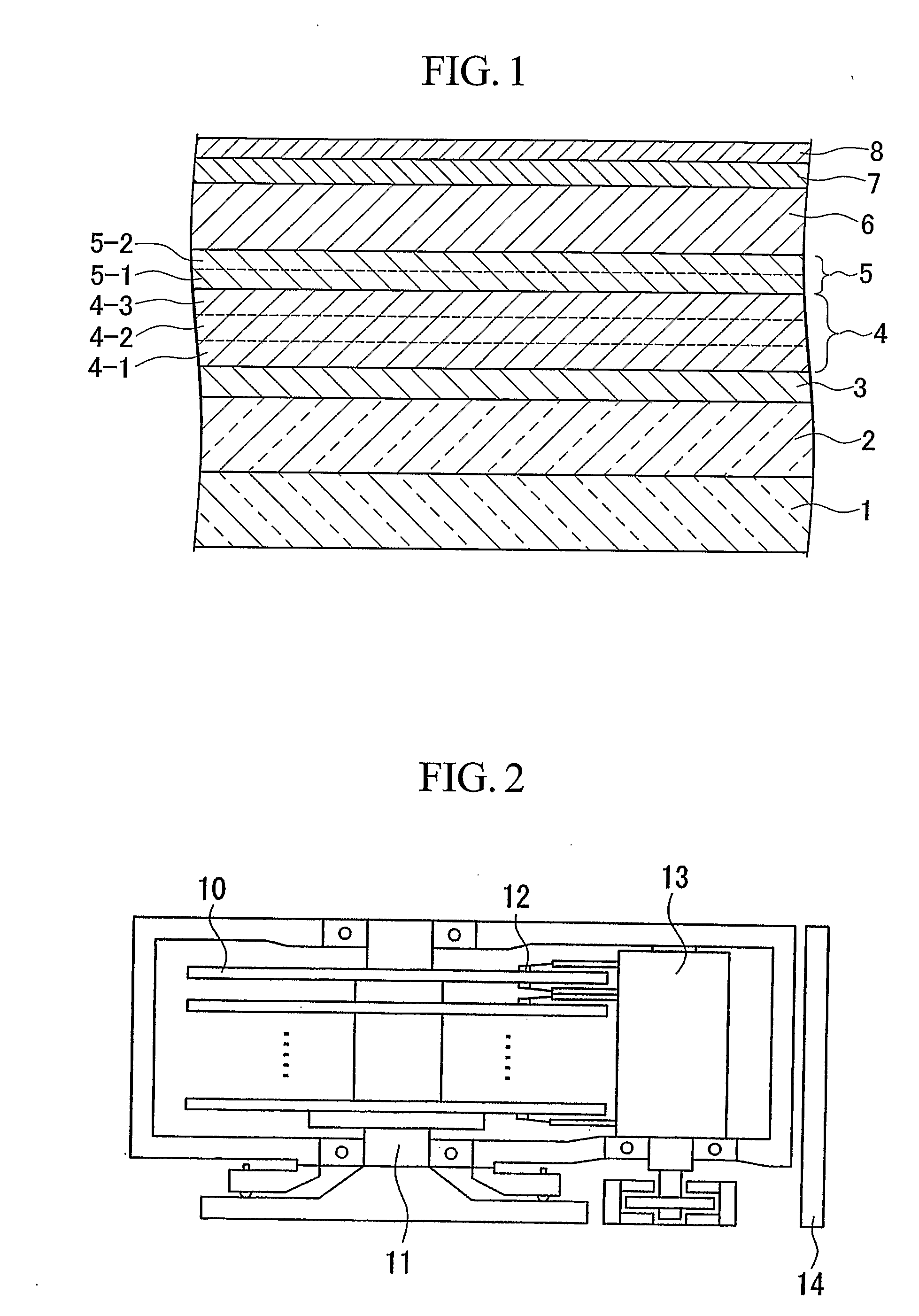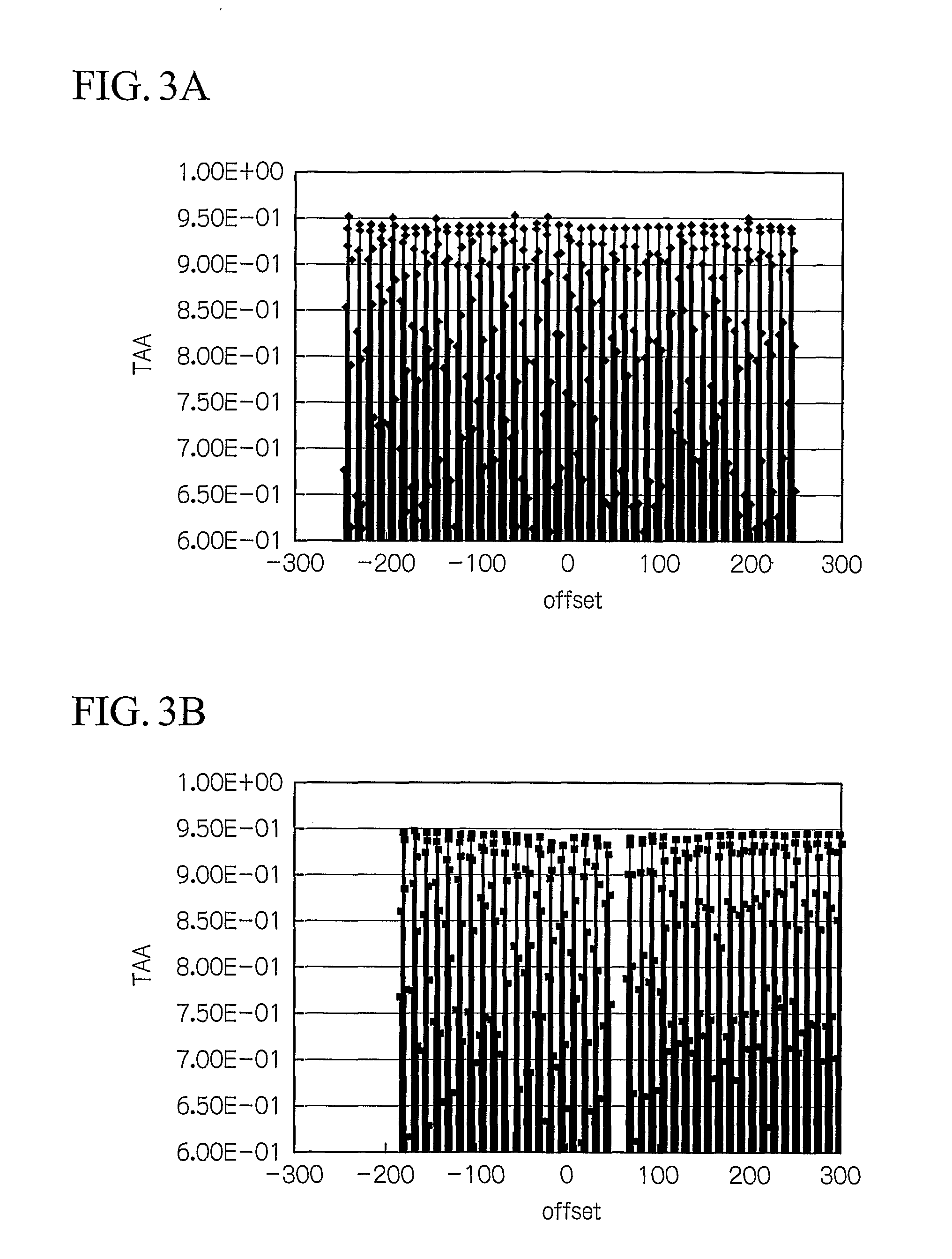Perpendicular Magnetic Recording Medium, and Perpendicular Magnetic Recording and Reproducing Apparatus
- Summary
- Abstract
- Description
- Claims
- Application Information
AI Technical Summary
Benefits of technology
Problems solved by technology
Method used
Image
Examples
example 1
[0082]After washing the glass substrate (crystallized substrate TS10-SX, diameter 2.5 inches, manufactured by Ohara Inc.), the glass substrate was placed in the film deposition chamber of a DC magnetron sputtering system (Anelva Corp. model C-3010), and the film deposition chamber was evacuated to a background pressure of 1×10−5 Pa. On this glass substrate 7 nm of a Ti layer was deposited. Then 3 nm of Ru, and 20 nm of 88Co-12Ir (Co content 88 at. %, Ir content 12 at. %) were deposited, to form a SUL with a double-layers structure.
[0083]On this sample 6 nm of a Pd seed layer, 20 nm of a Ru intermediate layer, 10 nm of a CoCrPt—SiO2 magnetic recording layer, and 5 nm of a C protective layer were deposited by sputtering method. Then, a dipping method was used to form a lubrication layer of perfluoro-polyether, to obtain the perpendicular magnetic recording media.
examples 2 to 6
, Comparison Examples 2 to 6
[0095]Next, a perpendicular recording medium similar to that for Example 1 and Comparison Example 1 was prepared, using a silicon substrate of radius 22 mm as a substrate. In the depositing process, 5 pieces of substrate were subjected to film deposition simultaneously. Five pieces of sample were prepared by the same process as in Example 1 and the other 5 pieces of sample by the same process as in Comparison Example 1. The arrangement of the substrates during the deposition process is shown in FIG. 5.
[0096]Examples 2 to 6 were similar to Example 1 and Comparison Examples 2 to 6 were similar to Comparison Example 1.
[0097]WATE measurements which are the same as those in Example 1 and Comparison Example 1 were performed for the above samples. The dependence of the WATE phenomena on the positions of the substrates was also estimated. The results are shown in Table 2.
TABLE 2SoftCrystalmagneticstructure ofOutputunderlayersoft magneticKugrainKu⊥−2πMs2reductionU...
example 7
[0100]A special vacuum chamber of the magnetron sputtering system (Anelva Corp. model C-3010) which has two rotatable targets was used for co-sputtering experiment of two different materials on the crystallized glass substrates. The chamber was evacuated to a background pressure 1×10−5 Pa. As two target materials, a pure Co and a pure Ir were used.
[0101]First, the crystallized glass substrate was heated to 350° C. using a lamp heater. Next, a Ti film of 7 nm and a Ru film of 3 nm were deposited in order, and then a Co100−xIrx film of 20 nm was deposited, by rotating targets of Co and Ir in the same chamber. The x in Co100−xIrx film was adjusted by changing the discharge power to the targets
[0102]Furthermore, the C protective layer was deposited as the uppermost layer of the sample.
[0103]The crystal magnetic anisotropic energy Kugrain of the Co100−xIrx films with various constitutions were measured. The aforementioned type of torque magnetometer was used for the measurement. In addit...
PUM
 Login to View More
Login to View More Abstract
Description
Claims
Application Information
 Login to View More
Login to View More - R&D
- Intellectual Property
- Life Sciences
- Materials
- Tech Scout
- Unparalleled Data Quality
- Higher Quality Content
- 60% Fewer Hallucinations
Browse by: Latest US Patents, China's latest patents, Technical Efficacy Thesaurus, Application Domain, Technology Topic, Popular Technical Reports.
© 2025 PatSnap. All rights reserved.Legal|Privacy policy|Modern Slavery Act Transparency Statement|Sitemap|About US| Contact US: help@patsnap.com



